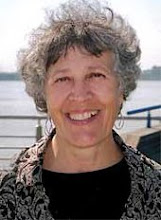Recently I received a box with 20 copies of galley proofs of Thanksgiving: The True Story with this printed on the cover: "UNCORRECTED PROOF
NOT FOR SALE." So what is a galley proof? It is an almost-but-not-final version of a book that is bound with a soft cover. It does not include the final corrections or all of the material, e.g. this galley proof is missing the map that shows the 12 competing claims for the "first" Thanksgiving and the index, etc. It also has a revised jacket image clipped to the jacket image on the galley proof. (The revised image resulted from concerns I raised about the original image). In addition it is printed on inferior paper stock so the pictures aren't crisp and clear.
Many publishers, including mine, send galley proofs to reviewers, bookstores, media outlets between three and six months before a book is officially released--that date, known as the publication "pub" date--is September 16, 2008, for Thanksgiving: The True Story. The point is to create "buzz," or excitement about a book.
I distributed my copies to teachers, librarians, and academics because I am eager to get their responses and ideas. I'll be posting their comments. First, here is what Myra Zarnowski, a professor of education and my colleague at Queens College, the City University of New York and author of Making Sense of History emailed me: "I finished Thanksgiving last night. It reads so smoothly! I just kept moving along until I finished. BUT the most important thing about the book is how you speak to the reader about your own thinking. I don't know of any author who reveals to children the process of raising and answering questions, searching for answers, who gives the reasons for thinking one way rather than another, who integrates comments of so many contemporaries, and who makes puzzling about the past both fun and important. The whole book is about historical interpretation.
Parts I and Parts II work well together. The first part will introduce children to thinking about the "truth" of competing stories. It can easily be extended in the classroom. The second part will likely get children thinking about Thanksgiving as they experience it. Again, easily extended in the classroom.
So Hurrah! Hurrah! Hurrah! As a teacher, I see this book as being about Thanksgiving, but also about historical thinking. This is a great contribution."
Note: Myra is one of the many people who answered my Thanksgiving survey whom I quoted. She's in chapter 7, Food: Turkey and Lasagna--"Myra Zarnowski remembered the first time she spent Thanksgiving with her Polish American husband's family. 'After we ate the turkey and stuffing and all the side dishes, I thought we were through. But we were just getting started because then they started bringing out all the Polish dishes--kielbasa, pierogi, etc.'" (pp. 113-114)
Tuesday, April 22, 2008
Subscribe to:
Post Comments (Atom)

No comments:
Post a Comment